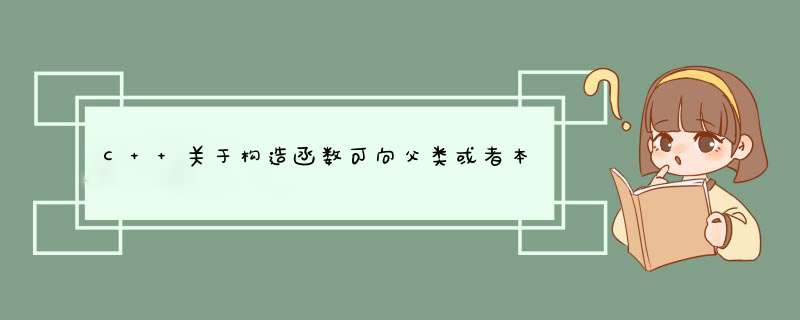
前面我们学习了C++使用初始化列表的方式来初始化字段的方法:
https://www.jb51.cc/article/153032.htm
这一节的原理和前面的差不多。
在C++的构造函数中,子类继承父类,那么,在创建一个子类成员时,可以同时向父类或者子类的构造函数进行传参,实现方法如下:
写一个例子:mul_argc.c
#include
#include
using namespace std ;
//英雄联盟类
class Hero
{
private :
int blood ;
string name ;
public :
Hero(int blood = 100,string name = "man wang")
{
this->blood = blood ;
this->name = name ;
}
~Hero()
{
if(this->blood < 0){
cout << "Hero blood error!n" << endl ;
return ;
}
cout << "Hero name is:" << this->name << endl ;
cout << "Hero blood is :" << this->blood << endl ;
}
};
//德玛类,继承于英雄类
class Dema : public Hero
{
private :
int blood ;
string name ;
public :
Dema(int blood,string name);
~Dema();
};
//在实现子类的构造函数时,可以同时向父类的构造函数传参
//例如这个例子的 : Hero(58,Js),相当于向父类的构造函数传参
//当然,子类也可以给本类的的成员传参
Dema::Dema(int blood,string name) : Hero(89,"Js"),blood(58),name("dema")
{
this->name = name ;
this->blood = blood ;
}
Dema::~Dema()
{
if(this->name != "dema"){
cout << "This Hero are no dema!" << endl;
return ;
}
if(this->blood < 0){
cout << "Dema blood error!n" << endl ;
return ;
}
cout << "Dmea name is:" << this->name << endl ;
cout << "Dema blood is :" << this->blood << endl ;
}
int main(int argc,char **argv)
{
Dema player1(79,"dema");
return 0 ;
}
总结
以上就是这篇文章的全部内容了,希望本文的内容对大家的学习或者工作具有一定的参考学习价值,谢谢大家对内存溢出的支持。如果你想了解更多相关内容请查看下面相关链接
总结以上是内存溢出为你收集整理的C++关于构造函数可向父类或者本类传参的讲解全部内容,希望文章能够帮你解决C++关于构造函数可向父类或者本类传参的讲解所遇到的程序开发问题。
如果觉得内存溢出网站内容还不错,欢迎将内存溢出网站推荐给程序员好友。
欢迎分享,转载请注明来源:内存溢出

 微信扫一扫
微信扫一扫
 支付宝扫一扫
支付宝扫一扫
评论列表(0条)